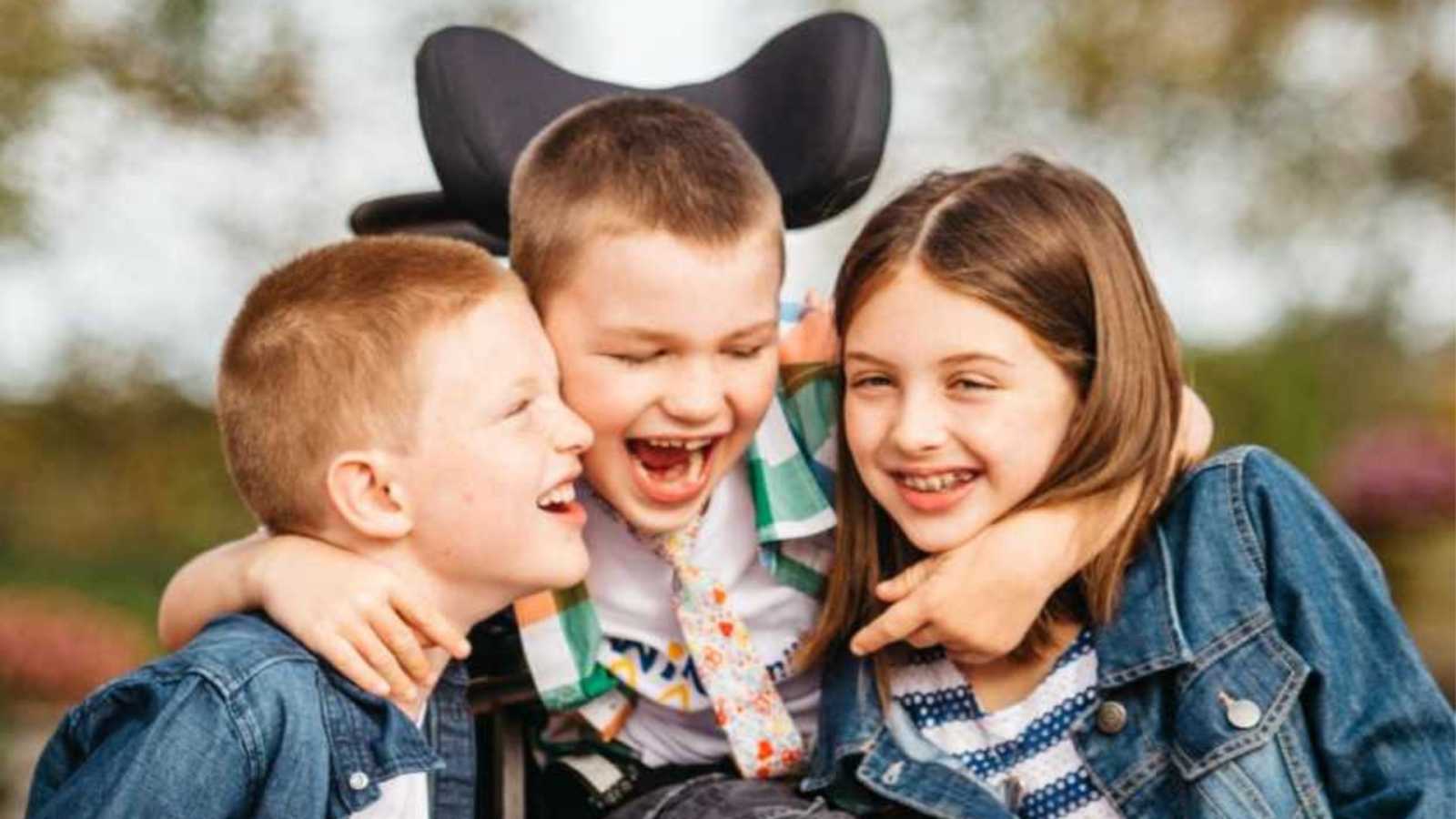“Until February 2013, our 2-year-old son Sam was completely normal child, no problems with his pregnancy or birth, he met every milestone, and overall was healthy. He would trip and fall a lot, but we never thought anything of it.
Then on February 23, 2013, Sam was playing on our bed. He fell off and landed on his side, on two layers of carpet. I was only a few feet away and watched this happen. He didn’t start crying immediately so my husband and I rushed over. He was unresponsive and limp, like he had passed out. After about 30 seconds (though it felt like forever) he woke up and started screaming. We calmed him down and looked him over; he seemed fine, he had stopped crying and did not appear to be in any pain. After a few minutes we tried to stand him up and he collapsed in a heap. We tried a few more times but he couldn’t stand, he was not able to bear weight on his legs at all. We called 911.
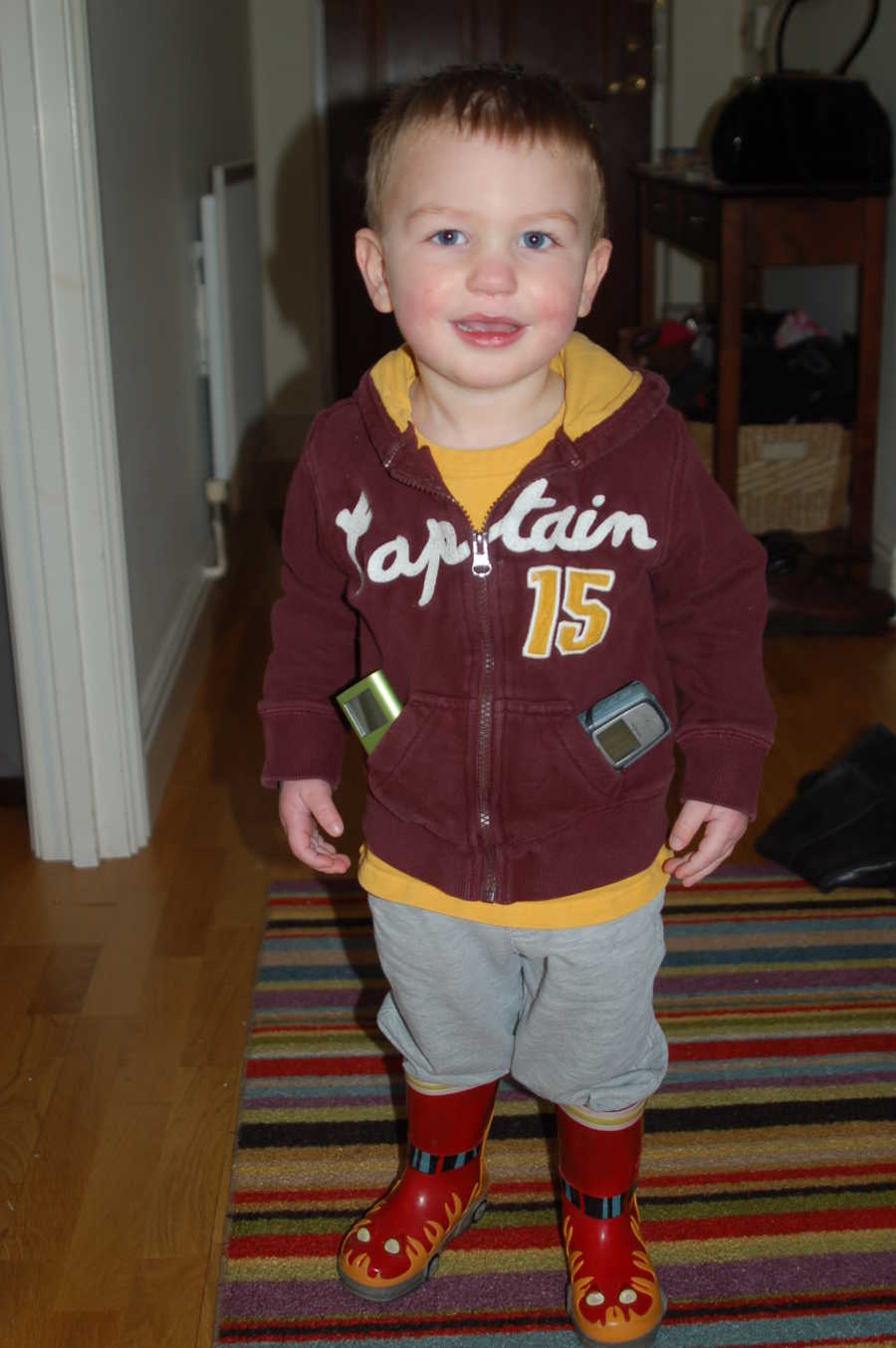
An EMT came to the house, he examined Sam while Sam was sitting on the sofa and couldn’t find anything wrong with him. Then we stood him up, and again he immediately collapsed. The EMT said something like ‘oh, that’s not right.’ He called an ambulance and Sam and I went to the hospital. At the hospital I noticed he was getting a little better, some of his ability to bear weight on his legs was returning, though he still couldn’t walk or stand up on his own. I remember Sam saying over and over again, ‘Mommy, I can’t walk’ in the waiting room. Never did it occur to me this was a problem that couldn’t be fixed. He had been a perfectly healthy 2-year-old just a few hours before.
When we finally got the see the ER doctor he looked Sam over quickly, said it was probably a hip sprain, wait a few weeks to see if it got better and sent us home. No tests were run at the hospital. A hip sprain seemed unlikely as Sam did not seem to be in any pain, but I am not a doctor so we went home and waited.
Sam did start to recover. After a week he was able to walk and stand, but not like he could before. He was dragging one of his legs and crisscrossing them when he walked, causing him to fall a lot. Two weeks after the initial fall he still wasn’t back to normal, so we went to the doctor. We were again sent home, told these things can take a long time to heal. A week or so later I took him back to the doctor and was again sent home. Finally, about 5 weeks after the initial fall, my husband came with me to the doctor to insist tests be run to find out what was wrong with our son. After much convincing on our part, the doctor did finally put in a referral to a pediatrician. The health system works a bit like an HMO in the UK, you have to go through your primary care doctor (GP) in order to be referred to a specialist, which include pediatricians. The GP told us he didn’t think they would pick it up at the hospital, but he did us a favor and put a note in the referral about developmental delays. This is what caused the hospital to follow up.
We were contacted by a pediatrician, and I spent the next few days taking Sam to the local hospital for tests. They took blood, an x-ray of his hips and a CT scan of his head. On the Thursday before Easter, the hospital called us and asked us to come in on Good Friday so Sam could see a pediatrician that specializes in neurology. This was the beginning of the worst few weeks of our lives. We went to the hospital (which was completely empty, Good Friday is a holiday in the UK – the first sign that things were much worse than we initially thought). We spent hours with the pediatrician. There were detailed questions about Sam’s history and symptoms, a thorough examination and more blood tests. The doctor then showed us the results of the CT scan, there were large white areas on the scan that should not have been there, in a very clear pattern radiating out from the center of Sam’s brain. It was obvious even to our untrained eyes that the CT scan was more than a little abnormal. I remember saying something along the lines of ‘that can’t be good,’ though what this actually meant we still couldn’t imagine. We could tell the doctor had some inkling of what the problem was but wasn’t telling us. We now know why. He had already contacted a pediatric neurologist at a hospital in London, and would call us to let us know about next steps.
This is when I started to worry, though I was still unable to imagine what was to come. I was starting to think Sam wouldn’t get better. I still couldn’t fathom how Sam could suddenly be sick with only a small bump on the head? The bump hadn’t even left a mark and I wasn’t even 100% sure he had hit his head.
The next day I got the call. I can remember exactly where I was standing, what I was wearing, where everyone else in the house was, every little detail about that call. The neurologist had looked at Sam’s scans. There was indeed something wrong with our son. We needed to bring Sam in for an MRI and lumbar puncture on Tuesday (Monday was a holiday in the UK for Easter). We had planned to go on vacation on Easter Monday, and were told we would have to cancel our trip. That is when I broke down, I had to hand the phone to my husband because I could no longer speak coherently. That was also when I knew without a doubt there was something very, very wrong with our son and everything was not going to be fine.
Having to wait days until we could go to the hospital for tests was sheer torture. We of course scoured the internet trying to figure out what was wrong with Sam. Cerebral Palsy seemed to have similar symptoms but didn’t quite fit, he didn’t bump his head very hard and his symptoms had improved after the initial fall. I barely slept, tried to put on a brave face for our kids, but was terrified and knew our lives were about to change. Finally, we were called into the hospital on Tuesday afternoon in preparation for the MRI and lumbar puncture on Wednesday morning.
At the hospital we met our neurologist and her associate (I think we were up to the 4th specialist we had seen in a week), they spent hours examining Sam and asking us questions. It was obvious that whatever he had was very serious. It was also obvious they knew what it was, and just weren’t telling us. This is never a good sign. I stayed overnight in the hospital with Sam, during the night Sam started developing a fever. I remember that bizarrely his speech was slowing and he was more difficult to understand, but I of course couldn’t link the fever with the speech at the time, why would I? Because Sam was an emergency case and not scheduled (again a bad sign), we had to wait until they could fit him in late morning. We finally went home Wednesday afternoon and had an appointment to come back the next day with Sam to discuss the results.
On Thursday, April 4, 2013, we went back to the hospital. By this point I knew the news was going to be bad; friends and family kept trying to reassure me everything would be ok but I knew it would not. I could tell by how the doctors had all tiptoed around us, the way they were spending so much time with us, the way things were happening so quickly (the National Health Service is a lot of things, quick is not usually one of them). While we sat in the waiting room there was a child in a wheelchair, my husband remembers thinking, ‘well at least it won’t be that bad.’
We were called into the neurologist’s office and she gave us the news. Sam has an extremely rare brain disease called Vanishing White Matter Disease. It is progressive, untreatable, incurable and terminal. At this stage the diagnosis wasn’t 100%, but anything that could cause an MRI like Sam’s would have the same outcome. She told us the younger a patient is diagnosed the more severe the disease tends to be. Sam was diagnosed young for a VWM case and seemed to be progressing rapidly. She didn’t know how long he had – it could be 2 years or 10 – but we would bury our son. She then said, ‘I don’t really know what to say, would you like a cup of tea?’ I replied, ‘I think I might throw up if I have a cup of tea.’
Vanishing White Matter disease (VWM) is a very rare condition that destroys myelin, the brain’s white matter. In doing so, it permanently affects transmission of brain signals to the rest of the body resulting in a loss of motor control. It is one of about 40 conditions that affect the white matter of the brain known collectively as Leukodystrophies. There are currently only about 250 people worldwide who are known to suffer from the disease.
VWM is a chronic and progressive condition, and is unusual in that periods of rapid and severe deterioration can be caused by a bump on the head, fevers and even anesthesia. Few sufferers survive more than 5-10 years after onset.
The first few days after Sam’s diagnosis were horrible, days spent taking endless photos and videos of Sam, scouring the internet for information on VWM (there was very little naturally – with only 250 cases worldwide information is scarce), and trying to figure out how we were going to cope. We mourned the life Sam would never have, the life we thought our family would live. We were painfully aware our life had just been divided into before the diagnosis, and after. Nights for me were spent sleeping long hours, though my husband was not so lucky and barely slept at all. For months after Sam’s diagnosis, I would wake up in the morning in a panic thinking, ‘I have told all these people that Sam is dying and he is not, he’s fine.’ Then reality would hit, that scenario would have been a dream come true, reality was much worse. He was not fine, would never be fine, and our life would forever be changed.
Once the fog of grief lifted I found it was actually easier to cope after the diagnosis than before. Now that I knew what I was dealing with, I was much calmer. It was helpful for me to know there was nothing to be done. We wouldn’t have the stress of endless hospital stays, we wouldn’t have the stress of wondering, hoping and not knowing what was wrong with Sam. I had a new perspective and sense of purpose. I knew what we were facing and had to learn to live with it. As far and I could see it, I had 2 choices; I could cope with it and keep living, or I could let it consume me. The latter was never an option. Not only would it destroy me, it would destroy my family as well.
A few months after the initial diagnosis, we received genetic confirmation that Sam had VWM. I was out shopping when I got the message, I fell to my knees on the sidewalk and cried. I called my husband and went home to recover before school pick-up. I never questioned the diagnosis, but I guess there was always some part of me that hoped it would be wrong. Now we knew without a doubt.
Since his diagnosis, Sam has lost the ability to stand, walk or even crawl, is almost completely unable to get around by himself. He has severe hand tremors making writing impossible and eating a challenge, his speech is very slow, he still wears diapers and probably always will, he has some learning difficulties and is not able to read or even recognize the alphabet. Despite all this, Sam is joy personified. He is always smiling and laughing and is the most incredibly positive person I have ever met. He is loving and kind and has a profound effect on all who meet him. We are so grateful for every day we get with him and grateful for everything he has taught us about what is important in life.
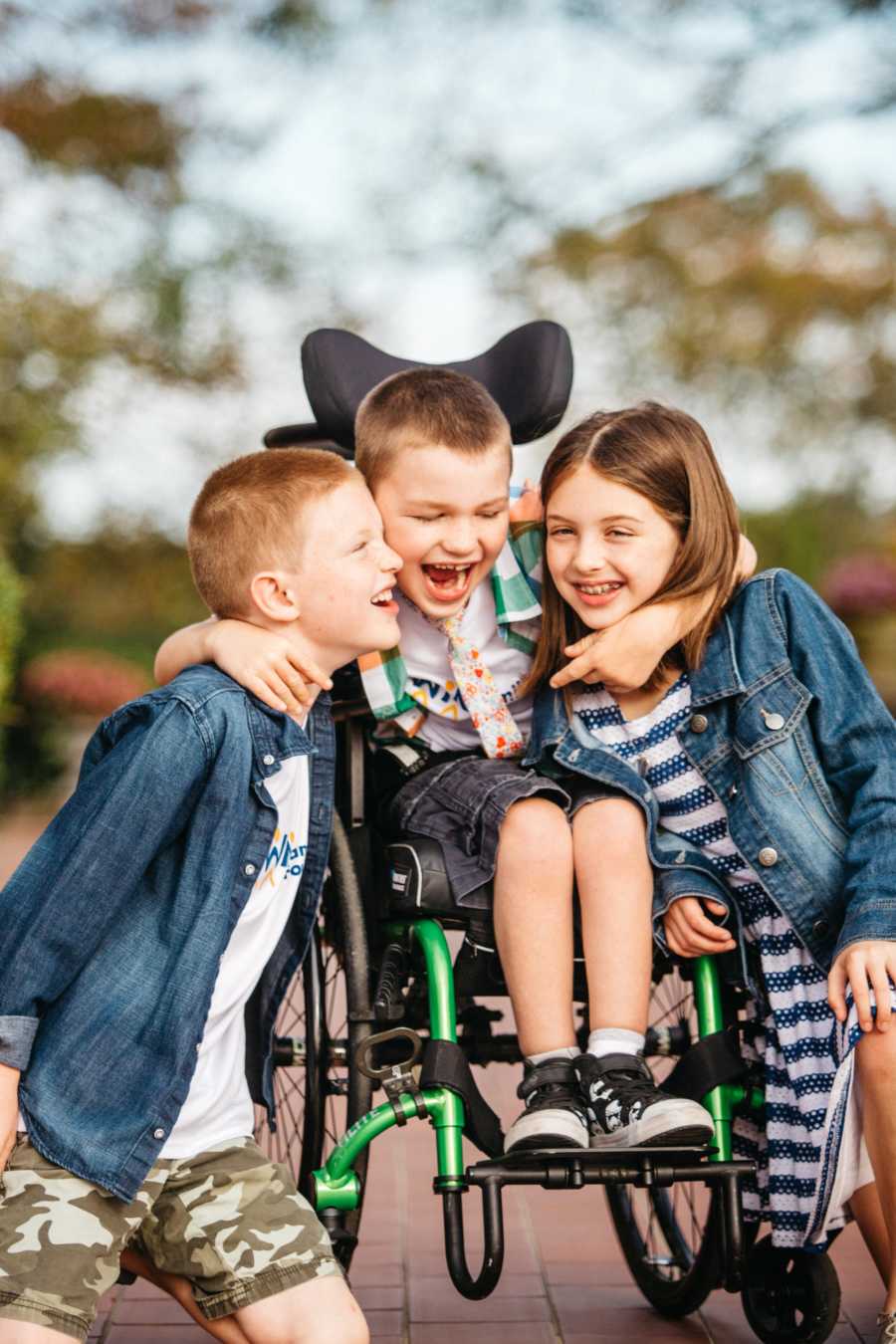
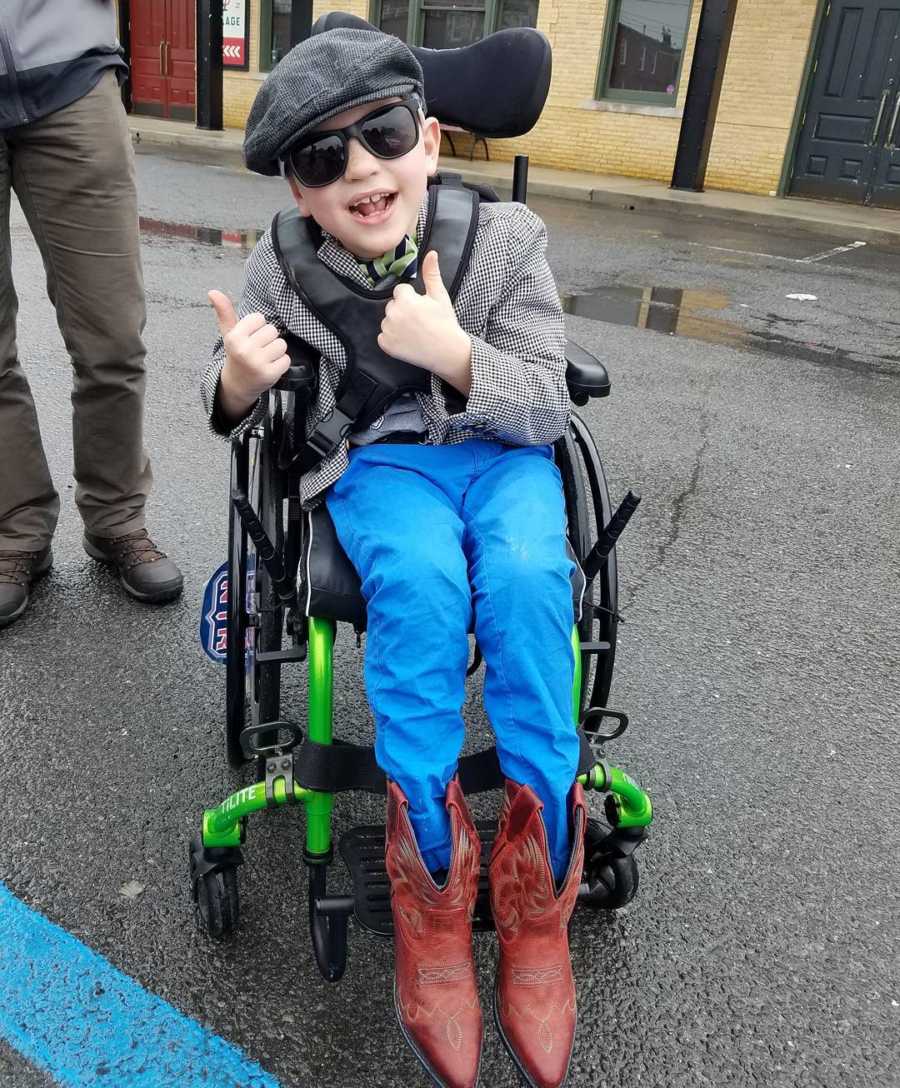
But it can also be a struggle. As any parent with a disabled child will tell you, it is hard and exhausting, mentally and physically. During the day it is easy to be happy, almost normal. But very often by the end of the day you are spent and the sadness sets in. It is hard to describe the strange juxtaposition between the tears that are constantly threatening to break through with the increased ability to take so much joy from life and all it has to offer.
When we were told Sam had VWM, it was clear we had a choice to make. We could become very protective and try to keep him with us as long as possible or we could let him live life fully, even if that meant he left us sooner. We chose the latter. Life has to be lived no matter how long we have on this earth. My husband and I made a very conscious decision to give Sam the very best life we could, to let him live while he can, even if that meant he was taken from us sooner.
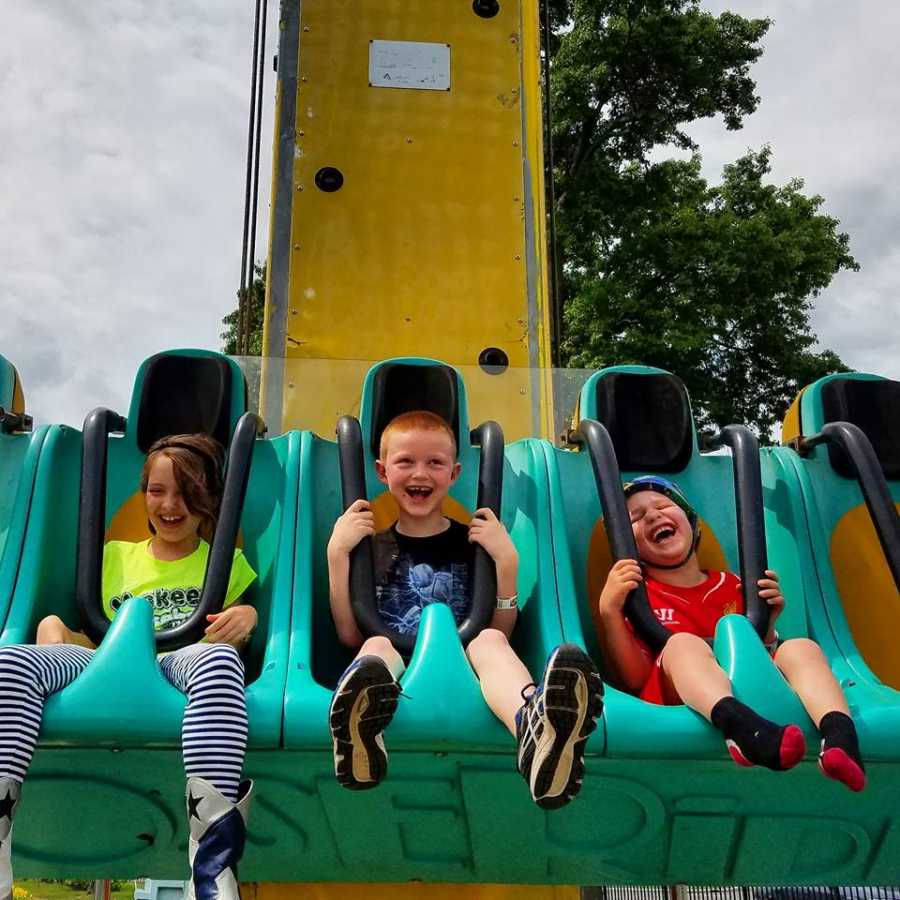

Since his diagnosis, Sam has been to his first concert (Train – his favorite) and met the band. He has eaten pizza in Naples, ridden in a gondola in Venice, celebrated his birthday in Budapest, gone downhill skiing in Vermont, sat on Santa’s lap in Lapland, met Sebastian Vettel, his favorite race car driver, and even water skied. He has been to 42 states and 22 countries (we are trying to get him to all 50!). He has experienced more in his 8 years than most do in a lifetime. Though it is getting harder and harder as he is getting older, we will continue to try to give him as many of life’s experiences as we can while we can, hoping to give him the life he deserves to have.
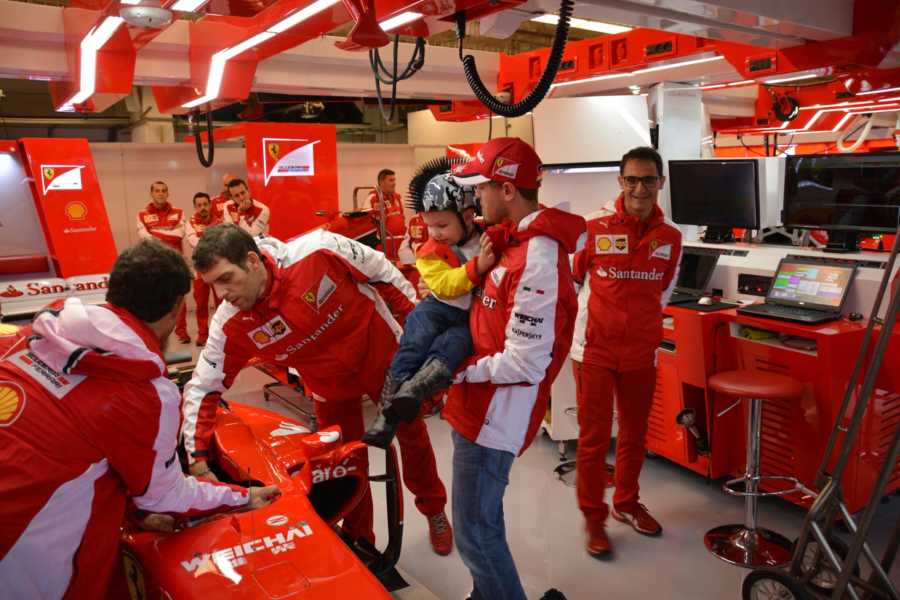


A few years ago we decided to start the VWM Families Foundation to fund VWM research projects worldwide, and last year we got the news that some of them have shown success. There are drugs out there that doctors think will stop the progression of the disease, but they will not undo any damage that has already been done. This means we are in a race against time to get these drugs to market and are trying to raise $2 million to accelerate testing and support VWM families.”
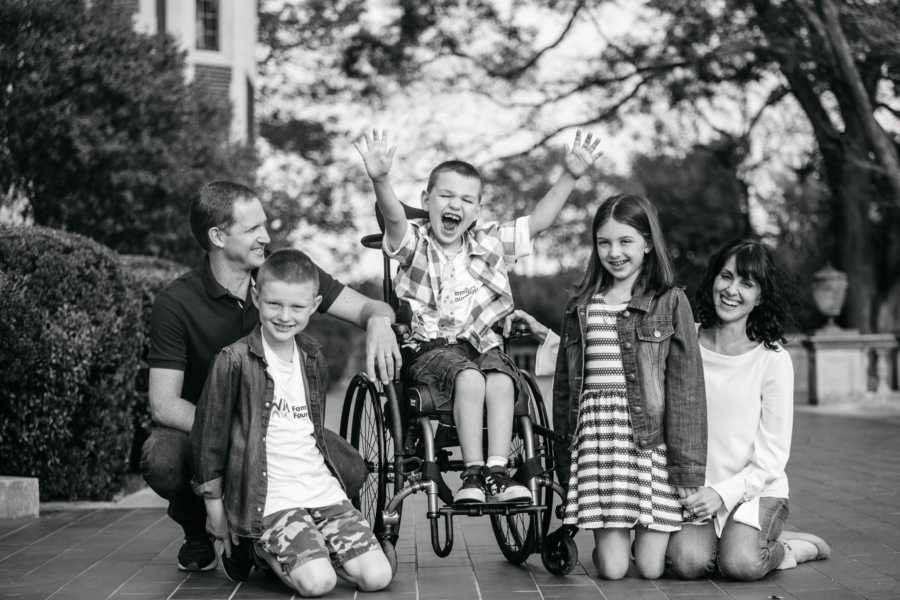
This story was submitted to Love What Matters by Allyson Buck, 42, of the New York City area. You can follow Sam’s story on Facebook and Instagram. Visit the VWM Families Foundation on Facebook or the website.
Please SHARE this story on Facebook to encourage others to live life to the fullest.

